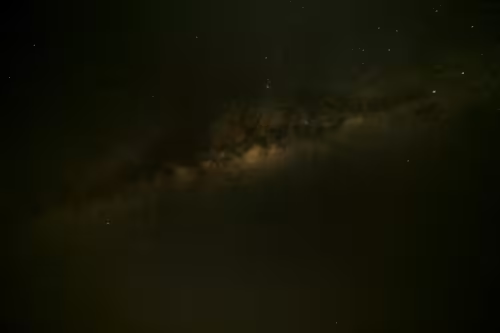Have you ever looked up at the night sky and wondered what lies beyond our Earth? The curiosity about what exists in the vast expanse of space has driven us to explore its mysteries for centuries. Today, space exploration has reached unprecedented heights, thanks to the meticulous efforts of space agencies like the European Space Agency (ESA). In this article, we will explore some of the latest discoveries in space exploration, as reported through the RSS feed from the ESA Blog Navigator.

This image is property of images.pexels.com.
Table of Contents
The European Space Agency’s Role in Space Exploration
The European Space Agency (ESA) has been at the forefront of space exploration and technological advancements. With a mission to shape the development of Europe’s space capability and ensure that investment in space continues to deliver benefits to the citizens of Europe and the world, ESA has been instrumental in making groundbreaking discoveries. The agency’s blog provides updates on various missions, research, and advancements in space technology.
Historical Context: The Evolution of ESA’s Missions
Understanding ESA’s contributions requires delving into its history. Founded in 1975, ESA has grown into one of the world’s leading space agencies. Initially, it focused on scientific research and technological innovation to carve out a niche in the domain of space science. Over the years, ESA has developed and launched numerous missions like Rosetta, Mars Express, and missions to the International Space Station (ISS). These missions have provided remarkable insights into the universe, pushing the boundaries of what was previously thought possible.
ESA’s Notable Missions and Their Achievements
Rosetta Mission
The Rosetta mission is one of ESA’s most celebrated endeavors. Launched in 2004, its primary objective was to study the comet 67P/Churyumov-Gerasimenko. Rosetta made history in 2014 when it successfully landed its Philae module on the comet, marking the first time any spacecraft had done so. This mission provided unprecedented data about the comet’s structure, composition, and behavior, significantly enhancing our understanding of these icy bodies.
Key Findings from Rosetta:
- Comet Composition: Analysis of the comet revealed a mixture of organic molecules, implying comets could have played a crucial role in bringing the building blocks of life to Earth.
- Water Signature: Rosetta found that the water on comet 67P has a different deuterium-to-hydrogen ratio compared to Earth’s water, suggesting that Earth’s water might not have come from comets like 67P.
Mars Express
Launched in 2003, the Mars Express mission aimed to explore Mars and its atmosphere. This orbiter has been providing detailed imaging of the Martian surface, facilitating studies on the planet’s geology and atmosphere.
Key Findings from Mars Express:
- Detection of Methane: Mars Express detected traces of methane in the Martian atmosphere. Methane could indicate the presence of microbial life, though processes like volcanism could also account for its presence.
- Water Ice Discovery: The orbiter discovered substantial quantities of water ice at the poles and below the surface, rekindling hopes of finding life on Mars.
International Space Station (ISS) Missions
ESA astronauts regularly participate in missions aboard the ISS, conducting a wide array of experiments in microgravity. These missions cover diverse fields like medicine, biology, and physics, aiming to improve our understanding of how space affects life and materials.
Key Experiments and Their Impact:
- Biological Studies: Research on the ISS has shown how microgravity impacts human physiology, which is vital for planning long-term missions to Mars.
- Material Science: Experiments have uncovered new materials and processes that could benefit industries back on Earth.
Clean Space Initiatives and Open Access Policy
Clean Space Initiative
ESA’s Clean Space initiative aims to reduce space mission environmental impacts. This initiative focuses on sustainable space exploration and developing technologies that minimize space debris.
Key Projects Under Clean Space:
- Eco-design: ESA is working on designing satellites from materials that would reduce environmental footprints.
- Active Debris Removal (ADR): Efforts are underway to develop technologies to remove defunct satellites and other space debris to make space safer for future missions.
Open Access Policy
In the spirit of advancing global scientific knowledge, ESA has embraced an open access policy, making its research and data available to the public. This transparency fosters collaboration and innovation across the global scientific community.
Benefits of Open Access:
- Fostering Collaboration: Scientists worldwide can access ESA data, stimulating collaborative projects and discoveries.
- Public Engagement: It increases public interest and understanding of space missions, creating a more informed society.

This image is property of images.pexels.com.
Key Concepts and Definitions
Microgravity
Microgravity is the condition in which objects appear to be weightless and can float freely. This environment, present aboard the ISS, allows scientists to study phenomena that are impossible to observe on Earth.
Organic Molecules
Organic molecules contain carbon and are found in all known forms of life. Their discovery on comets suggests that the basic ingredients for life might be widespread in the universe.
Deuterium-to-Hydrogen Ratio
This is a chemical fingerprint used to compare water found on other celestial bodies with Earth’s water. Variations in this ratio help scientists understand the origins of water in our solar system.
Example 1: Rosetta Mission Detailed Analysis
The Rosetta mission’s journey to comet 67P/Bucky-Churyumov-Gerasimenko was filled with intricate maneuvers and groundbreaking discoveries. Post-landing, the Philae lander revealed that the comet’s surface was much harder than expected, posing challenges but providing invaluable data about its composition.
| Factor | Rosetta Mission Findings |
|---|---|
| Organic Molecules | Found organic materials suggesting comets might bring life-blocks to Earth |
| Surface Composition | Hard, icy, and covered with a mix of dust and organic material |
| Water Signature | Different deuterium-to-hydrogen ratio compared to Earth’s water |

This image is property of images.pexels.com.
Example 2: Mars Express Mission Detailed Analysis
The Mars Express orbiter has painted a complex picture of Mars, revealing details about its geology, climate, and potential for harboring life. The methane detection points to active processes still occurring on Mars, which could include biological activity or geophysical processes.
| Aspect | Mars Express Insights |
|---|---|
| Methane Levels | Detected, indicating potential biological or geological activity |
| Water Ice | Significant quantities found at poles and below surface |
| Atmospheric Studies | Provided data on Martian seasons and climatic conditions |
Impact Assessment: Differing Perspectives on Space Exploration
Technological Advancements
Space exploration, particularly through ESA’s missions, has led to remarkable technological advancements. The technologies developed for space missions often find applications in other sectors, driving innovation and improving life on Earth.
Societal Impacts
Space exploration has a profound impact on society. It inspires generations to pursue careers in STEM (Science, Technology, Engineering, Mathematics), fosters international cooperation, and has the potential to address global challenges such as climate change through better planetary understanding.

Future Directions and Implications
Future Missions
ESA continues to look forward with ambitious missions like ExoMars, aimed at finding evidence of life on Mars, and the Hera mission, which will study the binary asteroid system to develop planetary defense techniques.
| Mission | Objective |
|---|---|
| ExoMars | Search for signs of past or present life on Mars |
| Hera | Study astral impacts to develop defense strategies against potential Earth-bound objects |
Implications on Industry
The continuous advancements and data from space missions have a significant impact on various industries. For instance, the development of new materials for spacecraft could lead to stronger and more efficient materials for construction and manufacturing back on Earth.
Societal Implications
Discoveries from space missions have ethical, philosophical, and practical implications, broadening our understanding of life and our place in the universe. These implications foster global unity and public interest in protecting our planet and exploring new frontiers.
Predictions: The Future of Space Exploration
The future of space exploration seems promising, with a continued focus on Mars exploration and the potential for manned missions to the Red Planet. Technological advancements in propulsion, artificial intelligence, and sustainable space travel will redefine our approach to exploring the cosmos.
AI and Robotics
The integration of AI and robotics in space missions will exponentially increase efficiency and data collection. Advanced robotics could undertake complex tasks on other planets, where human presence is unfeasible.
| Technology | Future Impact |
|---|---|
| Artificial Intelligence | Automate data analysis, manage spacecraft autonomously |
| Robotics | Perform intricate tasks, facilitate human missions beyond Earth |

Conclusion
ESA’s contributions to space exploration are monumental, driving our quest towards understanding the universe. From the detailed study of comets through the Rosetta mission to the search for life on Mars via the Mars Express mission, ESA’s endeavors continue to provide invaluable insights. These missions not only enhance our knowledge but also pave the way for future breakthroughs. With continued efforts, the mysteries of space may become less enigmatic, appealing to the curiosity inside all of us.
To summarize today’s discussion, ESA’s missions, driven by technological advancements and dedicated research, have significantly enhanced our understanding of the cosmos. The agency’s commitment to open access and environmental sustainability further underscores its role as a leader in space exploration. Observing the night sky might never be the same as we continue to unravel its secrets, one mission at a time.
What do you think will be the next big discovery in space exploration?
Please read more about ESA’s fascinating endeavors through the links within our website.
Top 10 Space Industry Trends & Innovations in 2025
The Planetary Society Welcomes Continued Budget Growth for NASA

